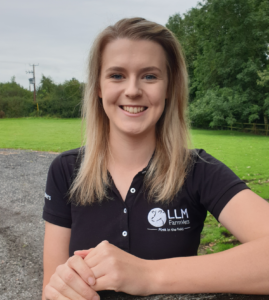Q&A: Reducing the risk of digital dermatitis
31st March 2022
This month, livestock editor Sarah Kidby spoke to Hannah Fitzsimmonds at LLM Farm Vets, part of the VetPartners group, about reducing the risk of digital dermatitis (DD) in dairy herds.
Q. What are the key risk factors for DD?
A. The biggest risk factors are carrier cows, poor foot bathing practices and foot hygiene. Some cows in the herd will have chronic DD where the treponemes ‘bury deep’ into the heel bulb skin and may not be showing signs of lameness but act as a reservoir of bacteria. One way these bacteria can be spread between cows is direct contact; predominantly via hoof trimming equipment. If you touch a DD lesion whilst trimming, the treponemes can survive for around two hours on the knives.
Wet feet, commonly caused by cows standing in slurry, are far more susceptible to infection with treponemes, as the skins’ defence is poorer when wet. Slurry management within the cubicle shed, but also in other areas such as the collecting yard, is a big risk factor.
Q. What are some of the most common pitfalls you see?
A. Three of the most common pitfalls we see in terms of DD control are incorrect foot bathing, poor hygiene in housing and a lack of quarantine.
Footbathing is often carried out at inadequate frequency, at the wrong dilution, or in a poorly designed bath. Housing conditions that lead to wet and dirty feet, such as pooling of slurry at crossovers or infrequent scraping out, weaken the skin’s natural defences and make them more susceptible to infection. Keeping the cow’s environment as hygienic as possible will go a long way (for DD and many other diseases too). Finally, not sufficiently quarantining new arrivals risks introducing a different DD strain into the herd which may be more aggressive or less responsive to treatment.
Q. What adjustments would you recommend?
A. Correct foot bathing protocols are so vital. When designing a protocol, it isn’t as simple as picking a chemical and diluting it down correctly; we need to be looking at the dimensions of the bath itself, the cleanliness of the feet and environment around the bath and the cow flow through it. You may be using the best chemical out there at the right dilution rate, but if the cows are walking through a bath that isn’t deep enough to reach the DD lesions, with feet covered in muck from a dirty walk into it, and then rushing through and not making enough contact, the solution won’t have been effective.
It is also important that all categories of animals, including dry cows and pregnant heifers, are included in the protocol. Carry out a footbath assessment with your vet to optimise this DD control point.
Looking at foot trimming hygiene, disinfection of hoof knives between cows is an easy adjustment. Having the blade submerged in an approved disinfectant (2% Virkon, 2% sodium hypochlorate being two options) for 20 seconds has been shown to kill treponemes and therefore will reduce transmission of DD between cows.
Keeping housing as clean and dry as possible will also promote better defence. This can be achieved through regular scraping, even concrete with no ‘holes’ where slurry will sit, dry bedding and good cow comfort to encourage cows to lay down off the passages. There is also a genetic link to DD resilience; consider this when making breeding decisions.
If there is high DD incidence, consider a ‘digi blitz’ treatment protocol to reduce the treponeme reservoir. Discuss this with your vet for more details.
Q. What are the potential implications for welfare and productivity?
A. Cows that are lame for any reason will be poorer performing, whether it be with reduced milk yield, slower to get back in calf, or losing body condition. Recent research has shown that heifers with digital dermatitis lesions prior to calving were 55% less likely to conceive at first service and produce 334kg less milk in their first lactation. Worryingly they were also five times more likely to have DD lesions in their first lactation as well, likely acting as carrier cows of the disease in the herd.
It is also, rightfully so, a welfare concern as lame cows will be at best uncomfortable and at worst in a lot of pain. Additionally, it isn’t great for staff morale, or even industry reputation, to see lame cows walking around the yard. In terms of cost, you can use the ‘AHDB Lameness Cost Calculator’ to work out how much your business is financially affected by lameness.
The longer you leave lameness, whatever the cause, the worst it gets and the more costly it is to rectify. The adage of ‘prevention is better than cure’ rings true, and if you are looking for ways to make real progress in lameness reduction, investing in an on-farm investigation in this area will pay its dividends.

